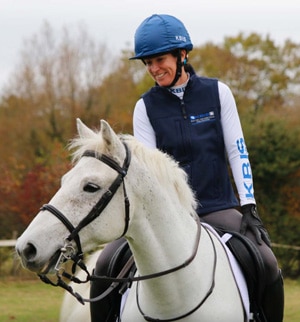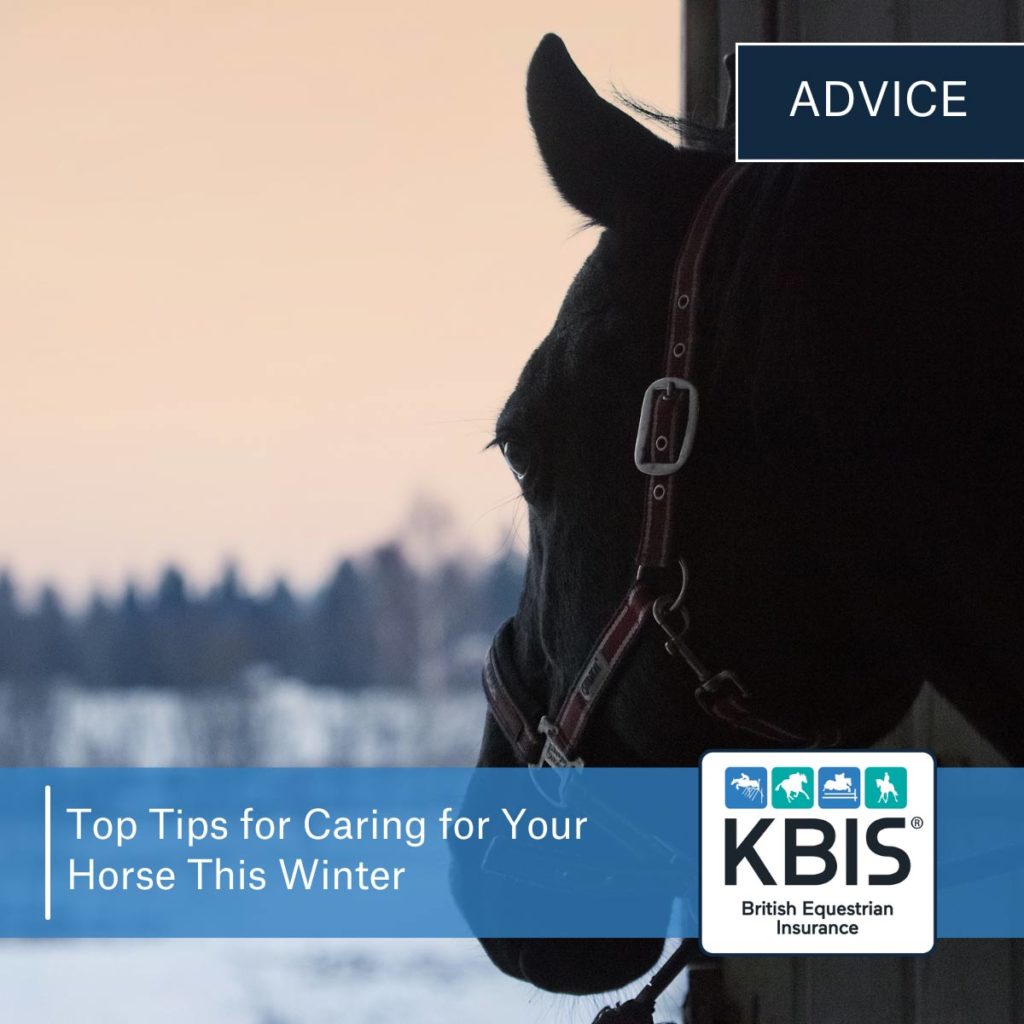Winter is often the least fun season for horse owners. The days get shorter which brings far fewer opportunities to ride and once green paddocks turn brown with mud, every part of looking after our horses seems more time-consuming. When the colder, darker months roll around it’s important to consider and adjust your winter horse care routine accordingly to ensure they’re happy and healthy.
8 top winter horse care tips
We’ve rounded up our top 8 winter horse care tips including feeding guidance and paddock management advice. Keep reading to find out all you need to know about caring for your horse in winter.
1. Make sure there’s plenty of forage available
Whether your horse is in or out, you should always ensure there’s access to plenty of forage such as grass, hay or haylage. Horses require around 2 – 2.5% of their daily body weight in forage per day and rely on food as a way of keeping warm when the temperatures plummet. If they need to lose weight, never significantly reduce their ration without veterinary advice and feed a lower calorie forage instead.
For turned-out horses, it may be necessary to provide additional forage in the form of hay or haylage, particularly when the grass is frozen, or grazing is bare. When putting hay in the field, put out a few piles and spread them out to reduce the risk of conflict for horses in a herd.
Some horses such as veterans may struggle to chew and therefore may require additional feed alongside forage to help them keep weight on over the winter months. It’s a good idea to speak to a nutritionist as they’ll be able to advise on feeding your horse in winter based on their individual needs.
If you’re adjusting your horse’s diet over winter, as always be sure to do so slowly to reduce the risk of colic.
2. Monitor their weight and body condition
Before heading into the winter months, weigh your horse and take note of their body condition to provide a baseline. Continue to weigh and monitor their condition regularly throughout the winter to keep an eye on whether your horse is dropping weight or holding too much due to reduced exercise and increased stabling. Frequent monitoring will enable you to notice issues quickly and make adjustments to keep them healthy.
3. Always ensure there’s fresh water
It may surprise you to learn that horses tend to drink more in the winter, this is down to increased feeding of dry forage and reduced intake of grass which is 80% water. Always make sure you check buckets and troughs at least twice a day as when the weather freezes you may need to break the ice. If your horse is stabled, you can try mixing in some warm water into buckets to prevent it from freezing overnight and those that dislike very cold water may also be more likely to drink it. Additionally, consider filling containers with water if your taps tend to freeze as this will ensure you have an emergency supply.
4. Rug appropriately if necessary
One of the top winter horse care tips to bear in mind is to not rug based on how you feel. Horses feel the cold very differently and most will be comfortable and can easily regulate their body temperature when it’s between 5 – 25°C, however, there are a few exceptions to this. Veterans, youngsters, those with clips, thinner horses, and breeds with finer coats such as Thoroughbreds and Arabs typically won’t regulate their temperature as easily, so will likely need rugging to help keep them warm and prevent them from dropping too much weight.
You should also make sure you’re not over-rugging as this can lead to them getting sweaty and uncomfortable which is a particular risk on cold mornings when the sun comes out and it gets warmer by midday. Over-rugging is also linked to weight gain as they don’t use the excess fat to keep them warm, which results in them storing it instead.
If you’re rugging your horse in winter, always be sure that the rug fits well, doesn’t rub, and that you have a spare available in case it gets very wet and allow it to dry properly before putting it on again. Make time for removing and adjusting rugs at least once per day and give your horse a thorough once over when doing so.
5. Watch out for winter ailments
Winter brings a lot of wet weather and with it comes mud. This influx of wet, muddy conditions leads to an increased risk of skin conditions such as mud fever and rain scald. If your horse is turned out, make sure you’re giving them a thorough daily once over, brushing off their coat and drying off their legs. Keep an eye out for the signs of mud fever such as crusty scabs which may have discharge, broken skin, matted patches of hair, heat, pain or swelling of their limbs.
6. Manage turnout carefully
If your fields are water-logged or very muddy, it may be necessary to restrict turnout to prevent paddocks from getting too churned and to reduce the risk of winter ailments developing. However, it’s good for your horse’s mental and physical health to provide at least some turnout as it provides exercise and allows them to exert their natural behaviours.
You may want to consider laying hardcore, woodchip or paddock mats on high-trafficked areas such as the entry to paddocks, around water troughs and feeding areas as this will prevent them from getting too muddy.
If you can, rest a section of paddock over the winter to ensure they have spring/summer grazing available once the grass begins to grow again in the spring.
7. Provide shelter
In some cases, livery yards may opt to keep horses in permanently over winter to preserve grazing, however, if horses have access to turnout, some form of shelter will be needed. The shelter can be natural, in the form of a treeline or man-made, such as a field shelter. Additionally, some may prefer to be stabled when the weather is very cold or wet, but each horse is an individual so it’s important to understand what works best for your four-legged friend. If spending more time in their stable this winter, check out our 7 ways to keep your horse entertained through the winter.
8. Adjust your horse’s exercise routine
When it comes to exercising your horse in the winter, the work you do may need to change depending on the facilities you have available. If it’s icy, avoid riding on slippery surfaces and on hard frozen arenas as this can cause injury and damage to your horse’s legs. You should also never ride in the dark or when visibility is very poor such as in the mist or fog as this can be very dangerous. Naturally, light conditions are lower in winter so it’s more important than ever to make sure you are wearing hi-vis when hacking.
Additionally, it’s important to factor in the cold when exercising your horse in the winter. For older horses in particular, colder temperatures will likely bring about stiffness which may mean they’ll need to do less work, or you’ll need to spend more time warming up and cooling down properly. Once you’ve ridden, you’ll also need to allow for extra time for the sweat to dry before turning out as they may catch a chill if the weather’s especially cold.
Those are our 8 winter horse care tips. Looking for more advice on caring for your equine? Check out our 10 top clipping tips next.


